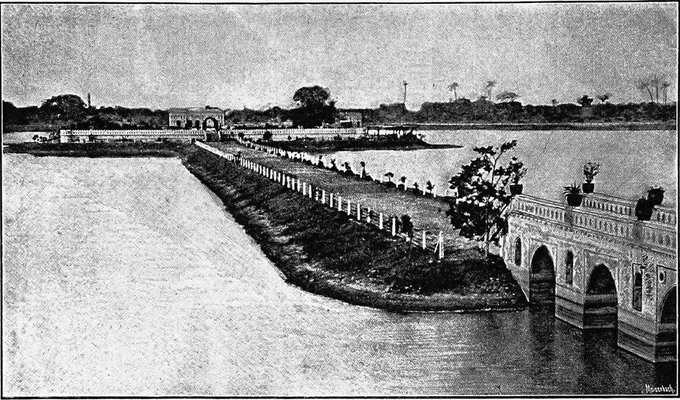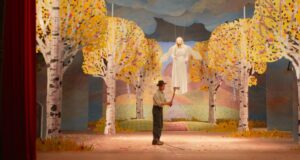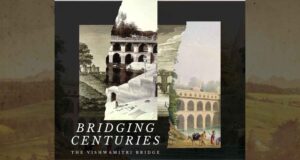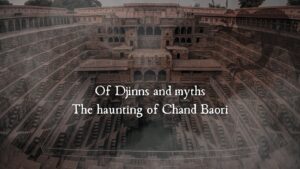Ahmedabad, Gujarat, lies a shimmering historical landscape – Kankaria Talav (Lake). A haven for nature enthusiasts, a playground for children, and a canvas for cultural celebration, Kankaria’s modern persona belies a rich and layered past. Today, as the Kankaria Carnival paints the city with festivity, let us embark on a journey through time, delving into the fascinating legacy of this urban oasis.
Our story begins in 1451 AD, under the reign of Sultan Qutb-ud-Din Ahmad Shah II. Driven by a desire to provide his burgeoning capital with a reliable source of water and aesthetic delight, the Sultan embarked on an ambitious project – the construction of Hauz-i-Qutb (the Pond of Qutb). No ordinary reservoir, Hauz-i-Qutb was envisioned as a grand reservoir and pleasure ground, a jewel in the crown of Ahmedabad.
Skilled artisans and engineers labored to bring the Sultan’s vision to life. Earth excavated from the lake bed was used to raise embankments, creating a perimeter that stretched over 8 miles. At the heart of the lake, a verdant islet emerged, christened Bag-i-Nagina (Jewel Garden) or Nagina Wadi. Upon this emerald gem, the Sultan ordered the construction of a palace, a sanctuary of tranquility amidst the bustling city.
Hauz-i-Qutb’s magnificence went beyond its sheer scale. Surrounding the lake, ornate pavilions known as Ghatamandals rose like sentinels, each one a celebration of architectural artistry. Their graceful arches and intricate carvings reflected the Sultanate’s architectural finesse, showcasing a vibrant blend of Hindu and Islamic influences.
Every Ghatamandal has its own secret language. Look for lotus flowers carved into the stone, symbols of purity and new beginnings. Spot intricate geometric patterns, hints of the Sultan’s fascination with numbers and order. These whispers of the past tell you about the artists who poured their hearts and souls into these stones, men and women who dreamt in lines and curves.
The Ghatamandals, despite their apparent uniformity, showcase a fascinating blend of architectural styles. Hindu and Islamic influences intertwine seamlessly, creating a visual symphony of arches, pillars, and latticework. The pointed arches, reminiscent of Islamic architecture, are complemented by the intricate floral and geometric patterns borrowed from Hindu temple architecture. This harmonious fusion reflects the Sultanate’s openness to diverse influences, making the Ghatamandals a microcosm of Ahmedabad’s multicultural heritage.
As time went by, Hauz-i-Qutb became an integral part of Ahmedabad’s cultural tapestry. Royal processions snaked around its periphery, their echoes reverberating across the still waters. Poets spun verses inspired by the moonlit ripples, while artists captured the changing hues of the lake in their vibrant canvases. In the 15th century, the renowned Sufi saint Shah Alam Bukhari is said to have bestowed upon the lake its popular moniker – Kankaria Talav. While the origin of the name remains shrouded in folklore, some ascribe it to the abundance of limestone (kankar in Gujarati) excavated during the lake’s construction.
Kankaria’s significance transcended its aesthetic and recreational roles. The lake proved to be a vital source of irrigation for the surrounding agricultural lands, sustaining both the city and its hinterland. Its waters fed a network of canals, quenching the thirst of the burgeoning populace and nurturing lush gardens that bloomed across Ahmedabad.
Yet, Kankaria wasn’t immune to the vicissitudes of time. As centuries passed, neglect and ecological challenges cast their shadows. By the late 19th century, the once pristine lake faced the specter of stagnation and dwindling water levels. However, the resilient spirit of Ahmedabad refused to let its beloved Kankaria fade into oblivion.
The early 20th century witnessed a concerted effort to restore Kankaria to its former glory. Dredging projects revived the lake’s health, while beautification initiatives adorned its shores with gardens and public amenities. By the 1960s, Kankaria had re-emerged as a vibrant leisure hub, complete with a zoo, amusement park, and a toy train chugging merrily on its banks.
Today, Kankaria embodies the dynamism of Ahmedabad itself. Its waters reflect the city’s rich history, whispering tales of sultans and saints, poets and artisans. Children’s laughter mingles with the call of migratory birds, forming a harmonious symphony of life. The bustling Kankaria Carnival is a testament to the enduring cultural vibrancy of this urban oasis.
And so, dear reader, the next time you stroll along Kankaria’s shores, pause for a moment. Listen to the whispers of the wind, catch the glint of history in the sunlight on the water, and remember the journey of this timeless jewel from Hauz-i-Qutb to Kankaria, a journey that continues to weave its magic on the heart of Ahmedabad.

















